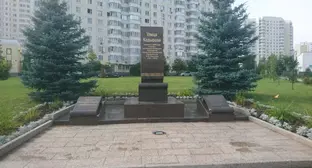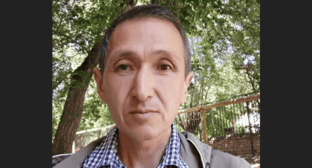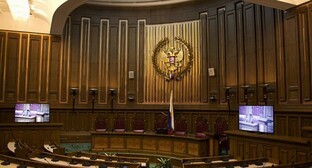23 May 2003, 17:37
Georgians
They call themselves kartveli. A nation in the Caucasus, the main population of Georgia. Population in Georgia - 3787 thousand people, in the Russian Federation - 130,7 thousand people (1992). There are big diasporas in Turkey and in Iran. Total population is 4,14 million people. They belong to the southern branch of European race and are divided into different types: Caucasian, Middle Asian etc. Georgian language belongs to Kartvel branch. On the territory of Georgia there are 17 dialects that correspond to sub-ethnic groups of Georgians: in Western Georgia - Adjars, Guris, Imeretins, Lechkhums, Rachins; in the Eastern Georgia - Kartlis, Kakhetins, Mokhevs, Tiuls, Pshavs, Tushins, Khevsurs; in Southern Georgia - Dzhavakhs, Meskhs; outside Georgia - Ingilois (in Azerbaijan), in Iran - Fereidans ( the descendants of the Georgians that were moved to Iran by Shakh Abbas in the beginning of the 17th century), Imer-khevs (in Turkey). The Megrel and Svan languages are also in the Kartvel branch (the sub-ethnic Georgian groups Megrels and Svans live in Western Georgia). Laz language is of the same family (Lazs live mainly in Turkey). Russian language is also common in Georgia. Their literacy probably goes back to a kind of ancient East-Aramei literacy. The oldest monuments of literacy date back to the 5th century A.D. Religious Georgians are Orthodox, some are Moslems-sunnits.
Georgians are an ancient nation of Transcaucasia. The ancient oriental and antique sources mention the ancient Georgian tribes of Mushks, Tubals, Khalibs, Gennokhs, Misimians, Kolchs. The ethnic nucleus of Georgian nation was formed out of three big related unions of tribes: Karts, Megrelo-Chans and Svans. They used to occupy a big territory between the Big Caucasus in the north, Small Caucasus in the south-east and the river Chorokh in the south-west. In the end of the 2nd - beginning of the 1st millenium B.C. on this territory there appeared significant unions of tribes (Diaokhi, Kulkha, Saspers) and the first early class societies: in the 6th century before Christ along the eastern and south-eastern Black sea coast there appeared the Kolkhid kingdom, in the 4th century B.C. in the Eastern Georgia the Kartl kingdom appeared (it?s called Iberia in antique sources). Georgian nation was forming, its original culture was developing. The baptizing of Georgians was an important historical stage of this process: the Kartl kingdom was baptized in the 4th century, Western Georgia - in the 6th century, by that time Laz (Egrps) kingdom was formed there. The other important factor of Georgia?s consolidation was the appearance of Georgian literacy. The most ancient surviving monument of literature dates back to the 5th century. The centralized state was formed in the 10-11 century and reached its height in the 12th - beginning of the 13th century; this finished the process of forming the Georgian nation, helped the development of economy and culture, cities and helped to have strong cultural connections with the Western Europe, Russia and the East. After the Tatar-Mongol invasion of the 13th century there started a long period of decentralization. A united state fell apart into separate feudal kingdoms and principalities, the social-economical, cultural and ethnic development slowed down. In the 16-17th centuries the situation got worse as a result of the invasion of the Osman Turkey and the Sefevid Iran. The grounds in the south-west of Georgia - Lazika, Adjaria, Meskhet-Javakheti - were occupied by Turkey in the 16-17th centuries. The local Georgian population accepted Islam under the influence of the intruders.
This state of political and social-economical stagnation remained in Georgia nearly till the end of the 18th century when there appeared favorable conditions for getting closer relationship with Russia. In 1783 Russia and Eastern Georgia (Kartl-Kakhetin kingdom) have signed ?An agreement on friendship? (Georgievsky treaty) that played an important role in the process of the future intimacy of the two countries. In 1801 Eastern Georgia joined the Russian empire (by 1811 Western Georgia did the same). Before the end of 1870-ies as a result of the Russian-Turkish wars some historical districts of Georgia joined it - Meskhet-Javakheti and Ajaria. In 1921 there was formed the Georgian Soviet Socialist Republic (since 1991 - the independent state of Georgia).
Since a long time ago in Georgia there formed a complex economical and cultural scheme that combined agriculture and cattle-breeding. Cattle-breeding was the main occupation in the mountains, at the foothills it was combined with agriculture, while on the plain agriculture was the main occupation. They grew wheat, barley, oats, rye, rice, lintel; in the Western Georgia the main crops were millet, foxtail (chumiza), corn. Since the beginning of the 20th century, especially during the Soviet time some subtropical plants appeared along the Black sea coast of Georgia: citrus, tung-tree, laurel, tea became very important for economy. Among the traditional occupations of Georgians were also vine-growing and wine-making, horticulture, growing vegetables; the by-trades were hunting, fishing, bee-keeping, silkworm breeding, picking wild fruit and herbs. Home trades were well developed: weaving wool , cotton, silk and flax fabrics, pottery, metal, wood, stone, horn processing, jewelry, making carpets, printed cloth, felt items (felts, felt cloaks and hats). Each zone of Georgia had its own certain types of plowing instruments: in the valley - a big plough carried by 8-10 couples of oxen or buffaloes, at the foothills - a lighter plough orkhela, in the mountains - a light plough.
Traditional villages of Georgia are very diverse. In the valleys and foothills of Eastern Georgia they are dense, sometimes scattered or stretched along the roads, rather big in size; in the mountains they are small, dense, located on terraces along the slopes of the mountains. In Western Georgia the villages were planned freely and stretched out for many kilometers. Traditional types of dwellings also differed in separate parts of Georgia. In the mountains all the living and household rooms were a compact complex and were placed vertically. In the valleys and foothills of Eastern Georgia part of the household rooms, for example marani (place to store wine) was located near the house, sometimes separate and even out of the village. In Western Georgia the dwellings were big, there was plenty of space both for the living and household constructions. The types of houses also differed a lot depending on the zones. In the mountains there were stone houses-fortresses (tsikhe sakli) with towers, stone houses consisting of 2-4 floors (chardakhiani sakli, kaloiani sakli, kor); 1-floor stone houses (kvitkiri) with flat earthen roof. In the valleys and foothills of Eastern Georgia there were darbazi - stone dwellings with step-arch cover (gvirgvini), with an outlet for light and smoke (ardo). In the center of darbazi there was a fireplace, on both sides of it - two wooden ornamented piles of support (deda-bodzi). They also constructed stone partly underground dwellings with flat earthen roofs (misturis s sakhli). In Western Georgia there were 1- and 2-floor wooden houses (sajalabo sakhli, oda sakhli, jargvali, patskha) with a two- and four-slope roof made of shingle, sedge, straw, with no windows, two doors one opposite the other. Since the second half of the 19th century in Georgia there started to appear houses of a new type: 2-floor, stone, with windows, wooden floors, consisting of several rooms, with fireplaces instead of open hearths. This type of a dwelling, more sophisticated, is common in modern Georgia. In the western part of the republic there survived traditions of wooden architecture. The most important part of traditional Georgian dwelling was an open hearth kera that played an important role in the cult of the ancestors and symbolized the unity of the family; by the hearth they performed some rituals: during the wedding, reconciliation of vendetta enemies. There were also the wall fireplaces (bukhari) and special stoves to bake bread - tone, purne, gumeli.
Traditional costume of Georgians from the different zones is of the same type. The male costume included a shirt (peranghi), trousers (nipkhavi, sharvali), an overcoat - chokha (similar to cherkeska) and a short akhalukhi (kind of a beshmet) put under the chokha, a belt (woolen, silk, leather). In winter they wore a sheepskin coat (tkavi), a felt cloak (nabadi). Their head gear: felt hats (nabdis kudi), tall fur hats, fur hoods (kabalakhi); the Imeretins were known for a special head gear papanaki. They dressed their feet in woolen socks (tsindebi), knit or leather nogovitsy (pachichebi), alamani - self-made bast shoes made of raw leather, in the mountains they wore knitted high boots (chitebi); the rich people wore high leather boots with heels. The female costume consisted of a shirt (peranga), long trousers (sheidishi), long dress (kartuli kaba - ?Georgian dress?) with a breast plate (gulispiri), a long fabric belt (sartkeli), its ends went down nearly to the floor. Over the dress the wealthy Georgians wore katibi - an open velvet overdress with fur. The head gear consisted of a veil (lechaki), a carton ring covered with velvet (chikhta), a thin roll covered with silk and a head cover (tavsakravi) usually made of velvet. Coming outto the street, Georgians always put on a kerchief (bagdadi). Footwear: shoes with heels and no backs (koshi), soft morocco shoes with no heels (like plosti slippers), morocco semi-high boots (tsuga), kalamani.
There were differences in the clothes of Georgians from certain historical-cultural districts. In Western Georgia women didn?t wear katibi, the head gear was different. The costume of Hevsurs differed in cut, color scheme, ways of decoration ( braid, applique? work, embroidery with wool and closs). Their costume was a bright combination of red, orange, blue, light-blue, yellow colors. The costume of Georgians was dark, mainly black, women?s clothes were decorated with a lot of silver chains. Some elements of traditional costume survived till nowadays: felt head gears; felt cloaks and kalamani as traditional clothes of shepherds; traditional color scheme is of importance.
Traditional food is based on dairy products, vegetables and bread: home-made cheese (suluguni, imeretinsky, tushinsky) made of sheep and cow milk, matsoni (kind of sour milk), butter, cottage cheese, cream, different vegetables and fruit (dried in winter), beans, herbs, wild herbs.
Bread - unleavened and fermented (lavash, puri, shoti) - was made of wheat flour (in the valleys and foothills of Eastern Georgia), and barley, rye, oats flour (in the mountain villages). In the Western Georgia they made mchadi - unleavened bread made of corn flour. Gomi was an important part of nutrition of the local population - it was a thick porridge made of millet and corn flour with no butter and salt. To a big extend gomi replaced bread, it was always served hot. They made porridge and soup of cereals and flour. Meat dishes made of mutton, beef, chicken and turkey were mainly festive food. In Eastern Georgia it was shashluk, khinkali, bozbash, chikhirtma, pilav; in Western Georgia they also made satsivi - a dish made of turkey or chicken with nut sauce. The main alcoholic drink was grape wine, in the mountains - vodka (araka), in the mountains of Eastern Georgia they also made barley beer that played an important role in the rituals.
Traditions of the table etiquette stay very important.
A nucleus family was the main form of the family in Georgia. Extended families (didi odjakhi, ertsakhli dzmebi) gradually disappeared, especially in the second half of the 19th century. The family relations were strictly patriarchal and were regulated by a system of taboos (elusions). The spouses were forbidden to call each other by name, to pronounce the names of the father-in law and the mother-in law, the wife was forbidden to talk to the elder relatives of the husband. In their marriages Georgians followed strict exogamy, marriages were forbidden between the relatives (cousins) 7-8 times removed, between people that have the same family name, between the ?named? relatives - blood brothers and children adopted following the traditions of ataluchestvo. Two forms of marriage common: on mutual agreement of the parents of the bride and the bridegroom with a redeem payment (in some mountain districts - ransom) and a marriage through kidnapping. The Georgian wedding cycle included the match-making (machankloba), the inspection of the ride, the betrothal (nishnoba) and the wedding itself (kortsili). The rite of betrothal was the most important in the wedding. The wedding lasted for several days, very many guests were invited. Even more guests were invited to the burial ceremony (especially in Western Georgia). Expenses were high, as tradition required several rich funeral repasts. Georgians stick to their traditions of mutual help, hospitality, vendetta, ataluchestvo (in Western Georgia), blood brothers and blood sisters. Georgian holidays are merry and full of colorful rites. They celebrated the New Year Eve (the 1st of January), Christmas (the 25th of December), Easter in spring. In February-March there?s a merry holiday keenoba-berikaoba with maskers, in autumn there?s Mtskhetoba, Alaverdoba etc. Some folk holidays are celebrated till nowadays - for example, after finishing to harvest grapes in autumn they celebrate the rtveli holiday.
There remains traditional folklore: historical legends, ballads, fairy-tales, proverbs, songs - labor, ritual, heroic, lyrical, table, weeping songs, folk dances (lekuri, khorumi, gandagan etc.).




